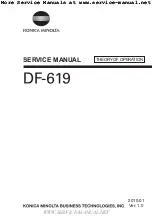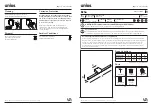
34
solution for about 1-2 minutes.
5. Wash the myograph chamber and supports several times with double distilled water.
6. If acids such as 1M HCl and 3M HNO
3
are used to clean the chambers, make sure ALL surfaces are thoroughly
dried after copious washes with double distilled water. Any residual acid will cause corrosion of the stainless
steel chamber and/or mounting supports.
IMPORTANT:
•
BE VERY CAREFUL USING HCL OR HNO
3
BECAUSE THESE ACIDS MAY CAUSE EXTREME DAMAGE
TO THE STAINLESS STEEL CHAMBERS AND SUPPORTS, AS WELL AS POSE A SAFETY HAZARD TO
THE USER. DO NOT USE BLEACH TO CLEAN THE CHAMBERS. REPEATED USE OF CHLORINATED
SOLUTIONS SUCH AS BLEACH AND HCL WILL CAUSE DAMAGE TO THE STAINLESS STEEL PARTS OF
YOUR MYOGRAPH SYSTEM. VOID USING THEM IF AT ALL POSSIBLE.
•
AFTER CLEANING, ALWAYS CHECK THAT THE GREASE AROUND THE TRANSDUCER PIN IS SUFFICIENT
TO KEEP THE BUFFER AND WATER FROM ENTERING THE TRANSDUCER HOUSING.
If red or brown discolorations appear on the chamber sides or on the supports, the following cleaning procedure will
work in most cases:
1. Incubate the myograph chamber and supports for 2 minutes with 2mM T-1210 Tetrakis- (2-pyridylmethyl)-
ethylenediamine solution dissolved in double distilled water.
2. Use a cotton-tip applicator to mechanically clean all the affected surfaces during the incubation period.
3. Wash the myograph chamber and supports several times with double distilled water.
4. Incubate the myograph chamber with 96% ethanol for 10 minutes while continuing the mechanical cleaning with
a cotton-tip applicator.
5. Remove the ethanol solution and wash a few times with double distilled water. Incubate the myograph chamber
and supports with an 8% acetic acid solution for 2 minutes and continue the mechanical cleaning with a swab-
stick.
6. Wash the myograph chamber and supports several times with double distilled water.
7. Dry the surfaces using absorbent paper (i.e. Kim-Wipes) or cotton-tip applicators.






































